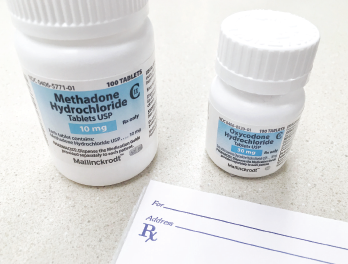
PureRadiancePhoto / shutterstock.com
The prevalence of chronic opioid use among patients with rheumatoid arthritis (RA) doubled between 2002 and 2015, especially among patients with severe pain or on antidepressants, according to a new study.1
The study adds to prior data reporting trends in chronic opioid use in RA patients.2,3 Severe pain was the strongest predictor for use of chronic opioids, with hazard ratio of 2.53 (95% confidence interval [CI], 2.19–2.92).
“It was interesting that this relationship was independent of RA disease activity. In other words, the association between pain and chronic opioid use wasn’t solely because they had uncontrolled inflammation from the RA; they may have had pain due to other causes as well,” says the study’s lead author, Yvonne C. Lee, MD, MMSc, an associate professor in the Division of Rheumatology at Northwestern Medicine, Chicago.
This observation points to the need for clinicians to accurately identify the cause of patients’ pain and treatment with disease-modifying anti-rheumatic drugs, she says.
The Study
In the study, Dr. Lee and colleagues used data from 33,739 RA patients identified through the Corrona registry from 2002–15. Since 2002, the Corrona registry has enrolled >42,000 persons with RA through both academic and community rheumatologists.
To calculate the annual prevalence of chronic opioid use in this cohort, the investigators defined chronic opioid use as any opioid use reported by patients during two or more consecutive study visits.

Dr. Lee
The study found chronic opioid use more than doubled from 2002–15 among these patients, from 7.4% in 2002 to 16.9% in 2015. An even greater increase was found among RA patients who contributed two or more data points in a given year, with a prevalence of 14.1% in 2002 rising to 31.3% in 2015.
Dr. Lee and colleagues also looked at potential predictors of chronic opioid use in 26,288 patients who were not taking opioids at baseline. They looked at both patient characteristics (e.g., age, ethnicity, sex) and RA disease characteristics (e.g., seropositivity, disease duration, disease activity), along with medication use.
The Clinical Disease Activity Index score was used to measure disease activity, disability was assessed using the Health Assessment Questionnaire, and pain intensity was assessed using a scale of 0–100 based on the question, “How much pain have you had because of your arthritis in the past week?”1
Following severe pain, the second strongest predictor was antidepressant use, with a hazard ratio of 1.79 (95% CI, 1.64-1.92). Less strong, but still predictive of chronic opioid use, was high disease activity, with a hazard ratio of 1.55 (95% CI, 1.30–1.84), and high level of disability, with a hazard ratio of 1.45 (95% CI, 1.27–1.65).


